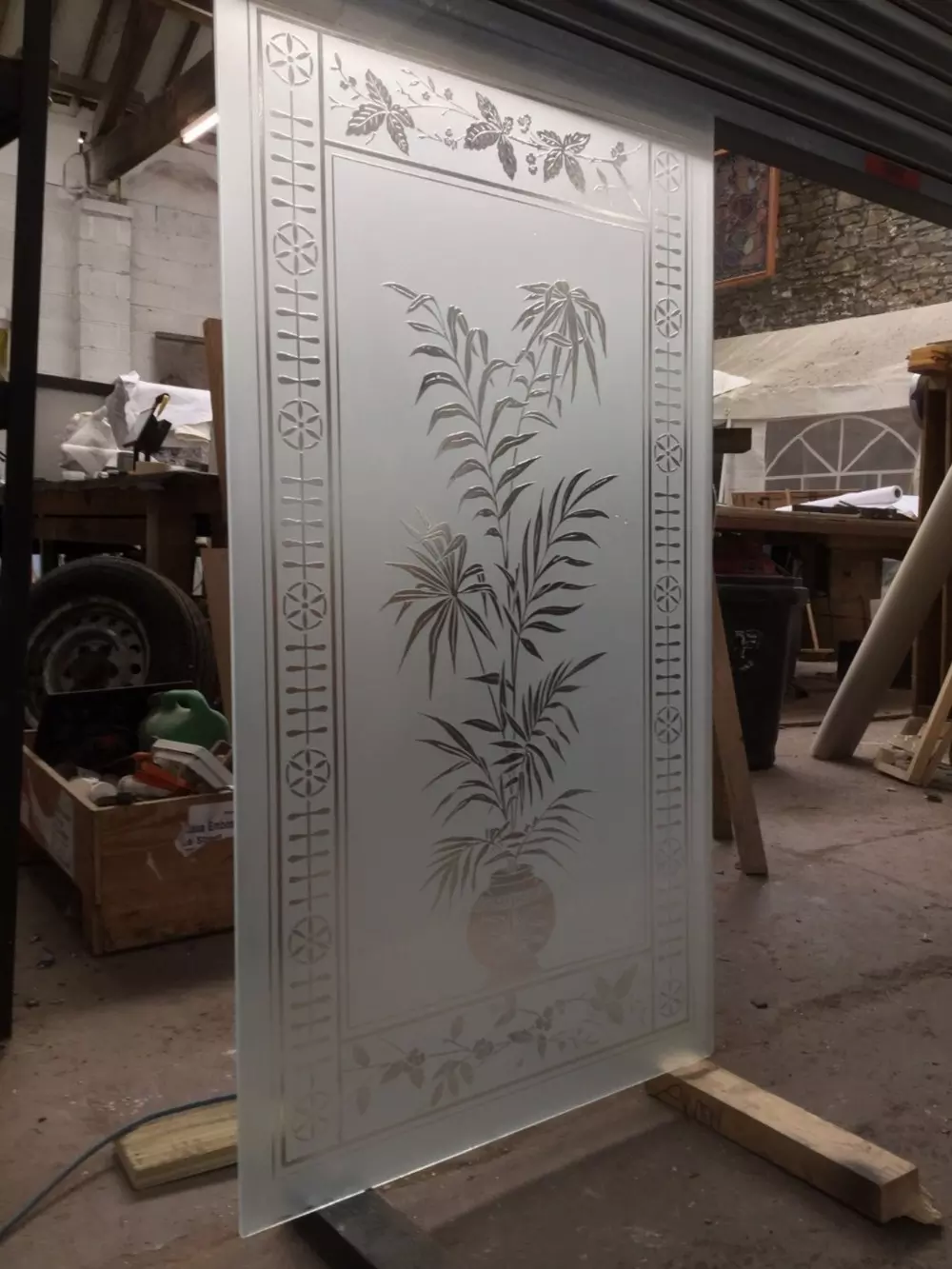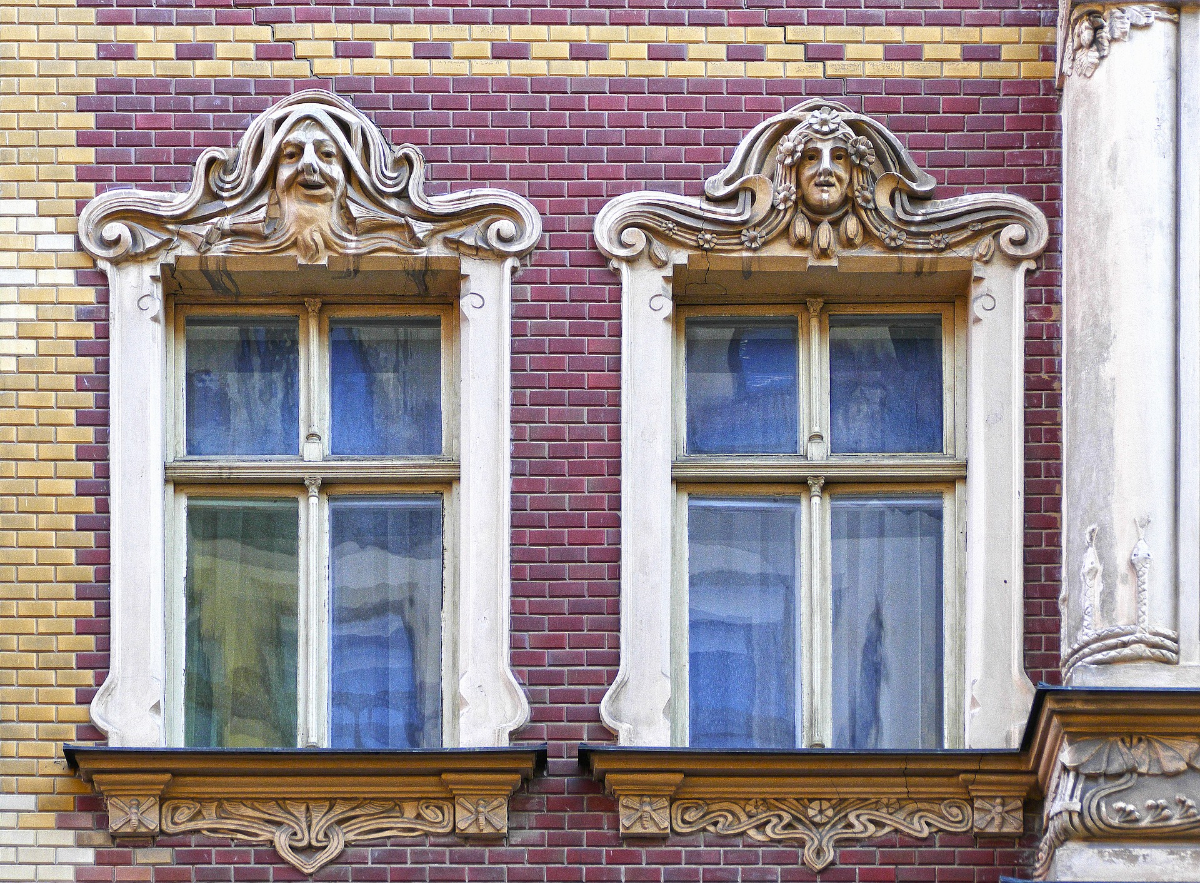What is ornamental Victorian window glass? Find out more about Victorian window & door design and the style of glass designs available from this period.
Victorian Window & Door Design
When looking at Victorian window design, one style stands out as a favourite of the era. Bay boxes with sash windows can be found on most homes built during the Victorian age, thanks to the combination of allowing more natural light to freely enter the property, comfortable ventilation and cheap installation costs.
Despite their economy, sash windows emerged from the opulence of Victorian architecture. You'll likely find them grouped into threes to form bays, typically bordered by decorative stone reveals. This was all made possible thanks to an improved glass manufacturing process that allowed for stronger and larger single panes of glass.
Many earlier Georgian windows were re-glazed in the Victorian era with larger glass panes and slimmer, more attractive glazing bars installed. However, the added weight of the larger panes in Victorian windows meant the frame joints needed reinforced "sash horns" in the upper construction angles of the frames. Front doors also became surprisingly important during the Victorian era.
With the British Empire and the Industrial Revolution widening the gaps between social classes, front doors suddenly became a way for wealthier individuals to advertise their status in the hierarchy. Most external Victorian doors were panelled, and depending on how decorative the remainder of the home was, they could be surrounded by an architrave door frame.
This frame would be designed to match the style of the door itself, which would also be painted or stained to reveal its grain, potentially making it look more expensive.
Some popular colours include dark greens, blues, browns, ambers, blacks, or deep reds.
The majority of these Victorian doors would have consisted of four panels, often with stained or frosted glass in the upper two panels.
It would have had a large porch area if the home was particularly grand. If not, the door would at least have a cover over it.
Again, improvements in glass manufacturing during the 1830s allowed many wealthy homeowners to incorporate more glass into their status-defining doorways.
While we already know that the upper two panels of doors would usually contain decorative glass, with stronger panes being developed, you can sometimes find the entire top half of the door being made of leaded panes of patterned or stained glass.

The Arts and Crafts movement, spearheaded by the poet, textile designer, socialist activist and all-around genius William Morris, saw a newfound interest in traditional stained glass in Victorian homes. The elegance of stained glass windows and medieval cathedral glass designs inspired Victorian architects and designers.
On the verge of the 20th century, the Arts and Crafts movement gave way to Art Nouveau, which drew heavily on the former in terms of design and aesthetics. The notoriously curvy designs of the Art Nouveau movement complemented stained glass perfectly.
Early Victorian Sheet Glass Designs
Alongside being able to produce larger and stronger sheets of glass, Victorian glassmiths also created stunning new designs to decorate said glass. Probably the most famous of these decorations is frosted or obscured glass. This decoration is achieved by painting, etching or embossing frosted designs onto the surface of glass sheets while they're still hot.
There are still examples of this innovative design throughout the world in buildings of the period. Obscured glass differs slightly from frosted glass in that one side of the glass is covered by an opaque film. This film is created by either grinding the surface of the glass sheet or by melting powdered glass on top of it.
Here are some other popular decorative glass designs commonly found in Victorian homes.
Muslin Glass
Muslin glass was another popular decoration produced throughout Europe until the 1930s. Also referenced as Chiffon Glass, it provided greater privacy thanks to its opaque nature.
Despite the name, no muslin or chiffon was used to manufacture this type of glass, although Chance Brothers in the West Midlands did experiment by laminating silk netting into their full-sized glass sheets. The names simply stuck, thanks to the similarities in the opacity of those fabrics and the designs of the frosted glass.
Acid-Etched Glass
Alternatively known as French embossing, glass etching is a prevalent decorative technique that was developed in the early years of the Victorian age and is still widely used today.
Parrafin wax or Brunswick Black varnish is painted onto the glass to resist the acid.
The designer then scratches elaborate details, textures, images and patterns into the poured wax or varnish before using hydrofluoric acid vapour when etching the pattern into the smooth surface of the glass.
This creates a pattern of clear and frosted areas, with alkalis or other abrasives used to create similar effects.
In the early 20th century, this process was improved with the mould-etching process.
Here, the glass sheet would have the designs and patterns directly moulded onto the surface, with each piece emerging from its mould with designs already etched onto it.

Brilliant Cut & Bevelled Ornamental Glass
Another fantastic glass design technique developed in the Victorian era was brilliant cut or bevelled ornamental glass. This process involves cutting V-shaped gouges into the surface of the glass sheets, which would then be polished.
It took a team of up to five artisans to create the desired effect: roughers, emeriers, smoothers, white-wheelers and polishers. They used a range of polishing or abrasive materials, including emery, sandstone, pumice, rouge or carborundum.
Are you interested in acid etched glass? If you require Victorian Style Etched Glass Specialist, contact our expert today. We offer professional glass decoration throughout the UK.
